I’ve been limping worse and worse recently. It seems to be a muscle problem, which makes sense now that I understand a little more what actually happened to me during surgery. Forget the screws and plate in the bone. The trauma to the muscle is severe. I’m going to get another x-ray done within the next couple days and am starting a strengthening regiment to try to get some of the muscles working.
Check the pictures out below of the tool they use to spread open the IT band to fix a broken hip. It looks primeval. It seems primeval.
I put some Garmin pedals on my bike to see the difference in power between my left and right leg power. I don’t know of another way to do that. I’m pretty interested to see if I’m really imbalanced or not. I tend to think that I’m just bad all around, but I do have some issues pedaling at certain times with my left leg. On Strava, there is a form and fitness page and it doesn’t seem that I am gaining any fitness, even though I rode 68 hours last month. When I crashed at the end of May, my fitness level was 116. It is now 48. I don’t understand the algorithm that Strava uses to manufacture that number, but I know that I was above 48 early February, only riding 18 hours in January. That is pitiful.
Okay, I’m down in Arvada, framing in Vincent’s basement. Keith and Catherine flew out late yesterday, after riding to Red Rocks in the morning. Bill and I kept going and did a lap of Morgul-Bismark after, so we had around 70 miles. My power meter’s battery died about half way, which is a shame. We rode pretty hard and I was interested in the numbers.
I entered Chequamegon Fat Tire, so am racing in two weeks. It is going to be what it is. I won’t even be able to get to the field in the front, but I would hate to miss the experience. I am lucky that I am to the point that I can just ride the event.







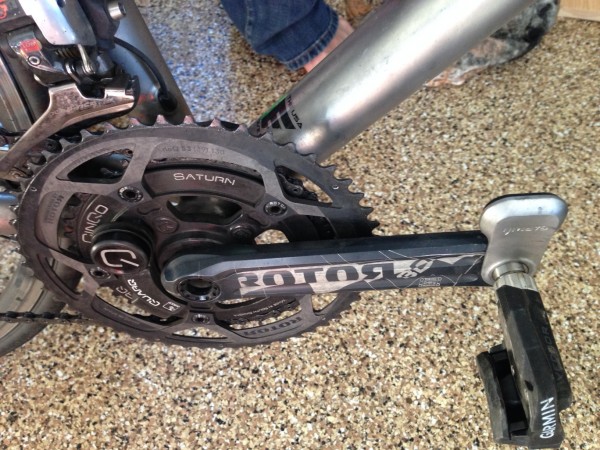
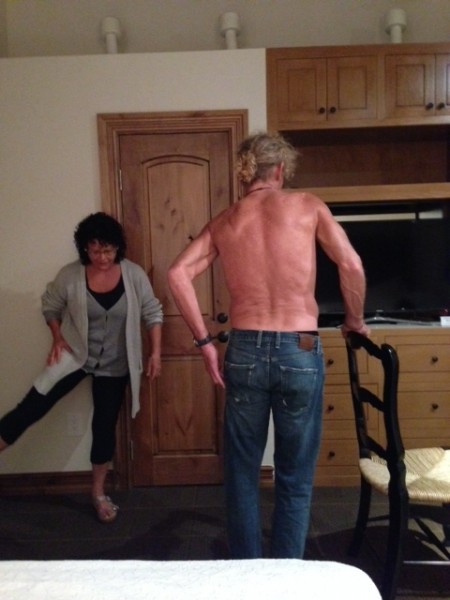
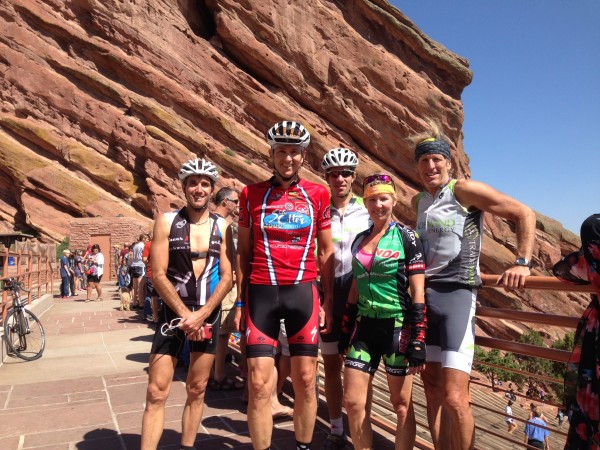
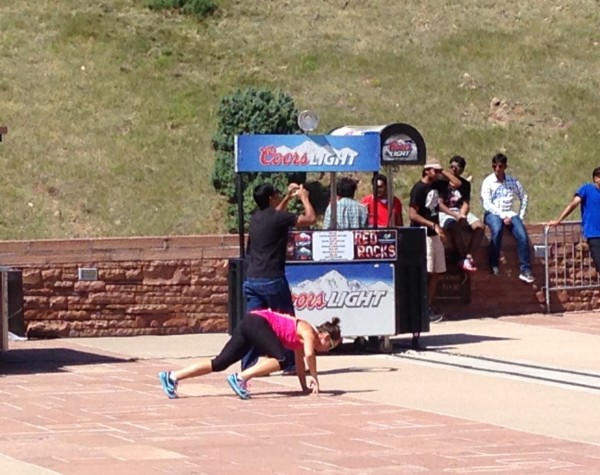
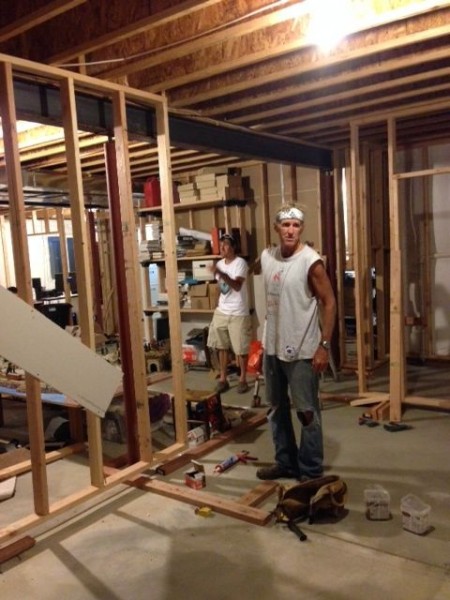
Of course your fitness is going to be lower than it has been in a long time. Your injury was very severe. I am still concerned that you are getting things back up to speed way to soon. You aren’t 22 anymore. Take it slowly…
Prolly gonna stir up a whole hornets nest with this, but perhaps you should look at the Power Cranks by crazy Frank Dey, they make riding no fun at all, but will create symmetry. If indeed you give them a go, now is the time, as the adaptation period could last a bit.
#1 your focus should be strength and mobility in the affected area, not riding your bike. Address strength and mobility and the cycling performance will return.
#2 Don’t trust any stats at strava. The way they use the gps tracks is not anchored to a road. Two GPS units on the same ride record different times and distances on the same segment. They alter their algos used to process your gps tracks over time. You can’t know what’s what at Strava. Their stats are pure fiction.
Find 15 minutes worth of open road and do it at max effort. Repeat every other week or so. Then compare your finish times. Or, you can bang your head against the wall with Strava. Your choice!
Anyone ever mention Keith Richards of the Rolling Stones to you?
steve, like all the chronic training load algorithms it is based off your current Functional Threshold Power (Coggin, don’t sue me please). If your FTP was set to X watts before your accident and has not been moved since you started back it will under-report your actual effort, because it is assuming that you can ride X Watts for an hour which you probably cannot reasonably achieve at the moment. You probably need to take a relatively hard effort you’ve done in the last month for around 20-30min and use that as your FTP or estimate what you think your best effort might be for that timeframe since you physical ability may not represent your aerobic conditioning. Likewise, if your FTP was set too low early in the year, it would over calculate the effort and therefore over-report your daily training load (leading to that 118 number), thus inflating your actual chronic training (aka fitness) number.
That’s weird framing, looks like it’s hanging from the floor above. What’s up with that?
Are you doing physical therapy? These set-backs/questions seem like the kind of things that a PT would be able to predict/prevent/answer. A professional needs to be guiding you through this recovery. They’ve done it before. They know exactly what the surgeon did, how that has affected your muscles, bones, tendons, and the methods to get those things back up a running without causing more damage. Just doing what feels OK to do is like trying to find the bathroom in a strange house in the pitch black.
Maybe you are going to PT, what do I know?
Steve mentioned that in this part of CO you have to hang the basement walls, because of the highly expansive clays under the basement slabs.
Continue on with the riding, and you’ll end your cycling career, this year, maybe with another accident, because your brain will push you farther than your body can take at this point. You really need to see a physical therapist and work on getting your muscles back; without that, you’re just setting yourself up for a potentially crippling disaster. You know tons of physical therapists – go see one and hang out there for a month instead of going to Chequamegon.
He will rehab the hip as well as he rehabbed the shoulder, not at all. He should to be lifting weights every day to increase bone density. The broken hip happened while falling over, not a crash. As I have said before, go to the gym, swim, take a spin class, lift weights and work on range of motion. The freewheel effect of the spin bike will help smooth out your stroke. See where you are in January and get out on the road if you feel like it.
Steve,
JB and WC got it exactly right. This is where you are at: finding the bathroom in a strange house in the pitch black.
You are thrashing around trying to “walk it off” or whatever. Stop it.
But, you aren’t going to listen to good advice.
Tic – Toc
I separated my shoulder last November. It was the most painful injury I have ever had. I had to let it rest and heal, then work on range of motion, then strength. Now it’s like the injury never happened. If all I did was ride my bike I would have a painful, useless shoulder. Sorry to be harsh but all of these medical professionals you have access to aren’t helping you.
Steve,
I sent you an email when you first broke your hip, offering suggestions on recovery, etc. I have to admit, along the way since your hospitalization, I’ve been a bit shocked at many of your choices. The first of which seems to have been a complete lack of physical therapy.
Not only is the fall itself quite damaging to your soft and muscle tissue in such a fall (and break), but the surgery itself is VERY traumatic to this region. The key to your recovery isn’t intensity and rigor, but rather patience and subtlety. Baby steps. Focusing on the small stuff.
It didn’t help that your surgery was performed far from home, as you were not able to establish a local connection to phase 2 of this process (the therapy). You really needed (and totally STILL need) some serious physical therapy. Hip abduction and adduction, etc. Leg lifts. Walking exercises. Propriaception exercises (which allow the subtle movements around your household furniture), etc.
You are finding that you can ride a bike (as you can move your major muscle groups), but you have neglected the smaller stuff that was even more seriously affected by your fall, break and surgery (there are three different injury issues, see?).
Time to get PT. Knock off all of the long bike rides and shit. Go to the back of the line, start over, get a PT and start again. Sorry, but it’s the truth!
If TIlford put a quarter of the 68 hours of riding time in August into PT he’d be feeling better for sure. The video of him riding the ergo less than a week after the operation was telling, he’s an addict of the road and just can’t help himself. At this point, Masters Racers of the world and Midwestern Cat. 2’s should breathe a sigh of relief, Steve won’t be winning any tires or gift certificates at the races for quite a while
Steve, I hope you realize that we (at least most of us) have your best interests at heart. These PTs can be miracle workers. They know the human body like a Porsche mechanic knows a 911. A non-professional might just install a new quarter-panel and wheel, not noticing that the fuse box is crushed, the shock is bent, and the windshield washer fluid reservoir is leaking.
Get well. See you at the Gateway Cup in 1 year?
Classic, masters racing gets back to the doctors and dentists. Hopefully Tradewind Energy and the Koch Brothers reassess how their marketing dollars are being spent.
I’m with the above commenters – though it’s been years since I was in training/racing mode, I do know that the older you get the harder it is to heal and recover from injuries. Seek out good local PT (whether in CO or KS) and concentrate on those baby-steps. You may have to relearn some things but you’ll thank yourself later. I agree that there is no point in ending your cycling career prematurely – taking a year to really take care of yourself may be necessary but it will also prolong your ability to be a beast in the peloton. Listen to your body and to medical advice!
It is never too late to get PT started. In fact, when I finish with clients in the office and send them on their way with exercises to do on their own they ask me how long they should continue to do the exercises. Most think once they feel 100% they can stop. I suggest they continue to do the PT exerises for the rest of their life.
Smug much?
I can’t see a single scenario where this is gonna end well. To call someone ignorant is harsh, but if you ignore all sound, sensible advice., you define the term.
I hope you don’t end up in a wheel chair after this race, but that is a very real possibility. What are the possible upsides that could possibly justify such a risk?
Trudi, talk some sense into this stubborn old fool. And if that doesn’t work, lock his bike to the wheel of his car.
Your impressions of Garmin Vector vs Quarq powermeters could be an interesting future column. Curious if the readings are consistent between devices or if you find discrepancies.
How funny, I’ve thought the same thing… blond younger brother.
what an ego!!!
I’m with you, Steve – the trauma to the IT band and muscle covering your femur is SHOCKING. And when I had the hardware taken out a year after surgery (cured residual pain issues), they cut through it all again, making it very sore and painful for many weeks. And I thought having the hardware out was supposed to be minor….
And to all the folks above, I found cycling to be VERY therapeutic for recovery (but I also did every minute of PT I was supposed to).
Kevin, I’d be interested to hear how often you went to PT and for how long.
I broke my hip in 2001 in a low-speed accident (much like Steve’s) and had hardware removal in 2003. I required a lot of baby steps to get back to walking “properly”, and I even had to return to PT several months later when I realized that I couldn’t avoid bumping into the furniture, etc.
My PT began with leg lifts in the bed (post-op). Hip abduction, adduction, etc. Getting up and using a walker a couple of times a day (which was NOT easy at first). That was the first week. A PT would come to the house and work with me 3 days a week. Then 3 weeks of crutches. Then several weeks of using a cane. About a month after the accident, I started outpatient PT, which REALLY helped. My doc would not clear me to return to work in Manhattan, as I needed to climb steep stairs on a train to commute, so I had to use car service (and this was right after 9/11) to get into the city (work paid for it).
PT was really about the subtle exercises that help the body control movement. It wasn’t about gaining my cycling strength back. Seeing Steve here, I can see that yes, perhaps I could have simultaneously started trying to ride a bike at some point (huh?), but honestly, a bike was the LAST thing on my mind during this period. My rationale was “As long as I’m still limping, I’m not ready to ride a bike yet.”
A few months later, I did get back on the bike (with a greatly reduced regimen), but with that hardware in my hip, there was no way I was going to race. My orthopedic surgeon told me about the consequences of breaking things with that hardware in-place (steel rods inside femurs, etc). No way I was risking that.
The hip break was a signal for me that I’ve taken LOTS of risks in cycling. I’ve been hit by cars (twice), avoided collisions with cars more times than I can remember, endured hillbilly rednecks, etc. I still ride, but racing is now pretty much out for me. The bake handling skills of young riders have gone way down in the lower categories over the years (too much solo training, I suppose) . Too many Type-A’s in the masters ranks, taking sickening risks over stupid primes, etc. I just can’t risk it anymore.
Shattered my pelvis 3 years ago at Gateway Cup. Couldn’t walk at all for 3 months. Went to therapy, after that was finished I went to the gym for 5 months and kept working on the same exercises. Started slow on the trainer then the bike. I still do exercises and stretch every day at home. Raced 5 CX races last year. It takes a long time but I wanted to race CX so bad I did what I had to do and am much stronger now, for me anyway. Its cross season and I’m ready to hit a lot more races. You can do it too but listen to all the above, Go to PT and the Gym! If you do, you will be racing CX next season and doing it well.
JB – complicated answer, because I had three surgeries – the first when I broke the femur at the trochanter; the second six months later when they had to “re-break” my femur because it was set wrong in the first place (leg was 1 cm too short) and the third a year after that to remove the hardware.
The PT from the first surgery was not followed very well, given that I knew I needed a second surgery as soon as the bone was fully set. The significant recovery was from the second surgery. That was PT twice per week for eight weeks starting four weeks after surgery (which got me to full weight bearing without a limp), and exercises at home every day during that time period that would take about 30 minutes. From the third surgery, there wasn’t much PT to be done, given that I walked out of the hospital from it. Although I did become too active too quickly after, resulting in a lot of swelling and hence a lot of pain.
My last surgery was May 2013 and I am now at 100% recovery. Other than numbness where my leg was cut about 14 inches for the second surgery, I have no ongoing issues